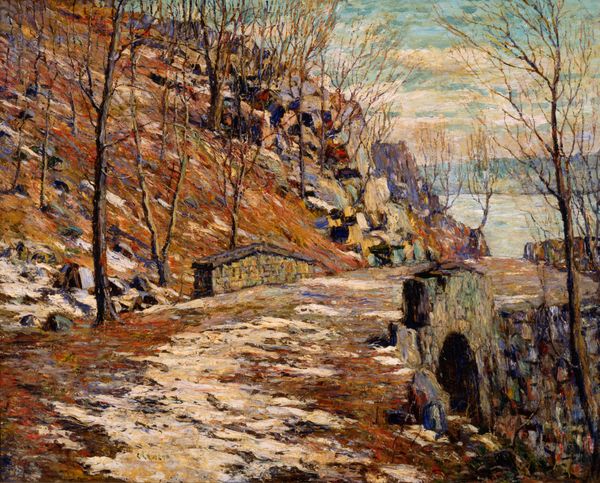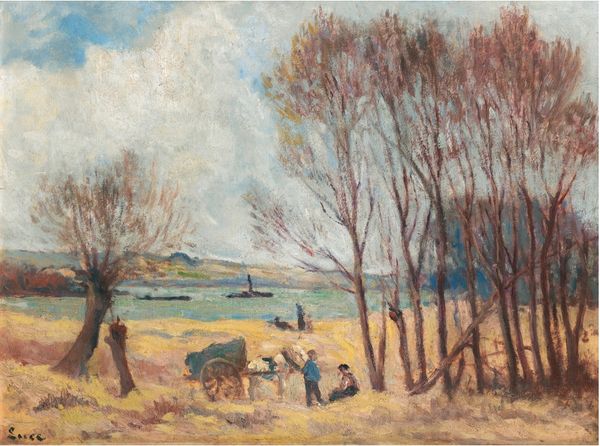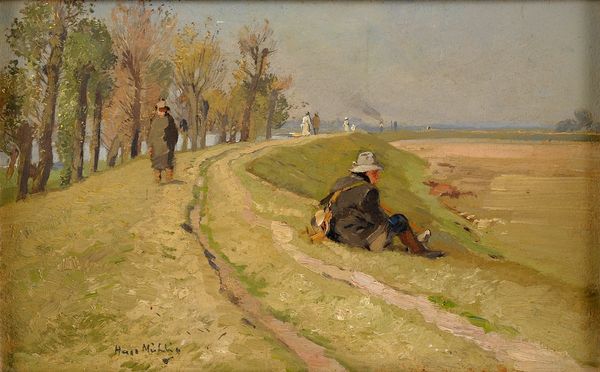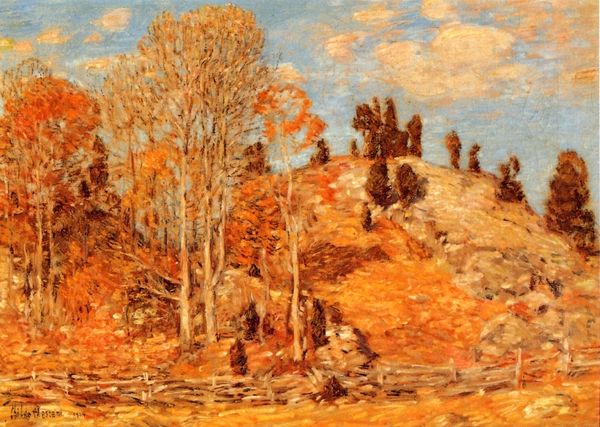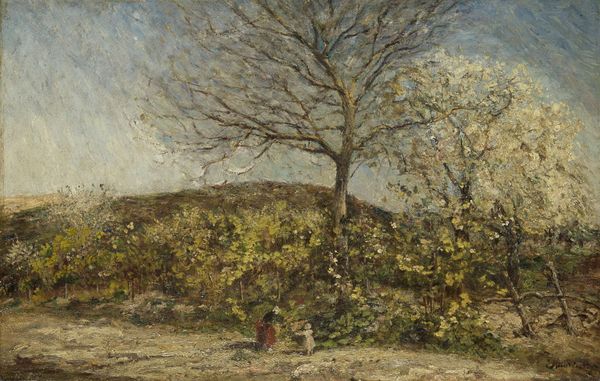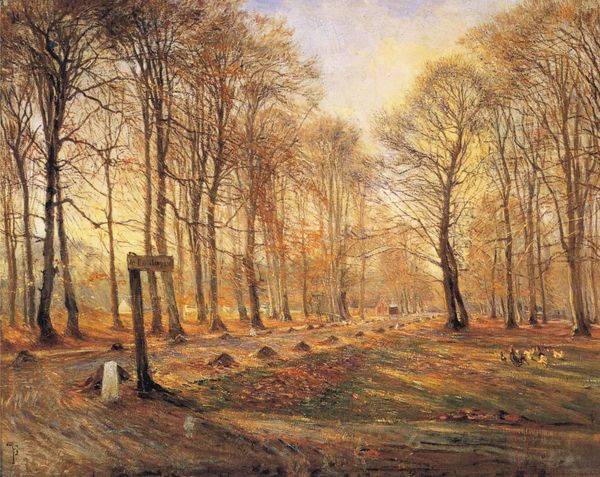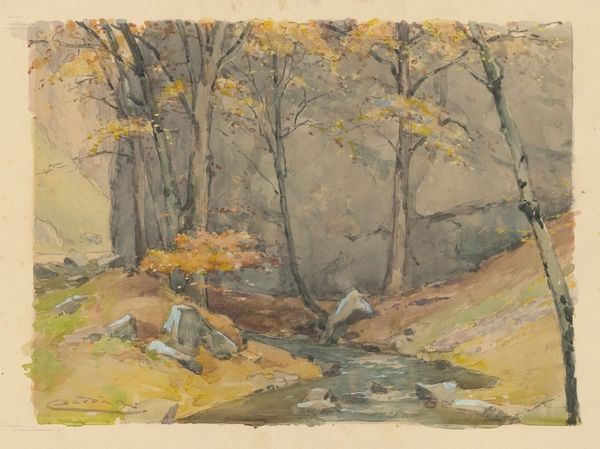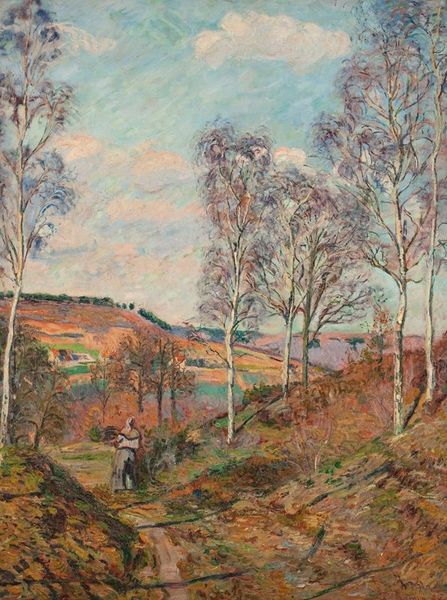
oil-paint
#
impressionism
#
oil-paint
#
landscape
#
oil painting
#
genre-painting
#
history-painting
#
realism
Copyright: Public domain
Editor: This painting, titled "Forest Worker in the Wood Quarry" by Hugo Mühlig, appears to be an oil painting. The muted colors create a somber mood as it depicts figures working on a desolate hillside. What draws your eye in this piece? Curator: Well, for me, it's the explicit depiction of labor and the transformation of natural resources that's compelling. The painting documents a specific industrial process: quarrying wood. How does Mühlig’s rendering of labor speak to the social realities of his time? Editor: It feels…mundane. Like work stripped of any romanticism. Was there anything particularly notable about wood quarrying during this time that the artist might be commenting on? Curator: Absolutely. Think about the growing demands of industrialization. This isn’t just about some picturesque scene; it's about the increasingly intense exploitation of natural resources to fuel industrial growth. The materials – the oil paint itself, the wood being harvested – are central. Where does the painting sit between genres, like landscape and genre painting, and how does it blur the lines? Editor: So you're suggesting Mühlig uses the traditional genre of landscape to highlight a very specific economic activity, making the means of production itself the subject? It really forces you to consider the human impact on the environment. Curator: Precisely! Consider the brushstrokes, the seemingly casual arrangement of the workers. They underscore the physical nature of this work. The lack of idealization removes the romantic lens we often associate with landscape painting. What are the ethics of painting a scene of extraction like this – does he celebrate the laborers, or lament a shift toward ecological harm? Editor: This really shifts how I see the painting. I was focused on the subdued palette, but now I realize that the subject matter, the act of transforming a forest into raw material, is the true focus. It's both beautiful and unsettling. Curator: Indeed. Mühlig challenges us to consider not just what we see, but how and why it's made and what broader forces drive its creation and the labour portrayed. It makes you question the nature of art’s raw materials and its reflection on the societal issues tied to their acquisition.
Comments
No comments
Be the first to comment and join the conversation on the ultimate creative platform.
